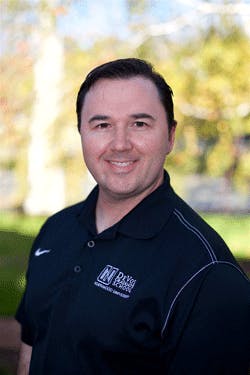With both firms having an extensive history within the global automotive segment dating back to the horseless carriage, December’s announced alliance between Dow and DuPont will result in the new DowDuPont delivering unified research, manufacturing and consulting services strategies.
Details regarding the transaction’s potential industry impact are unclear at this point as the pending deal remains subject to regulatory approvals from the numerous nations in which the respective firms do business.
“In automotive, we are combining Dow’s fourth position on auto exteriors and in the vehicle with DuPont’s significant presence – specifically under the hood – to become a more complete solutions provider to our customers,” according to Dow CEO Andrew Liveris, speaking in a conference call. “More of our approach will get spec’d into new designs than ever before.”
“For DuPont, this is a definitive leap forward on our path to higher growth and higher value,” concurs DuPont CEO Edward D. Breen. “This merger of equals will create significant near-term value through substantial cost synergies and additional upside from growth synergies.”
Established by E. I. du Pont in 1802 as a Delaware gunpowder mill, in 1914 Pierre S. du Pont became an early automotive investor by buying stock in the fledgling General Motors, eventually rising to become GM’s chairman.
DuPont’s current corporate automotive industry involvement includes the aftermarket, body & exterior, chassis, electrical & electronics, fuel & fuel systems, hybrid & electric vehicles, powertrain & engine system components, safety systems & interiors, thermal management & HVAC and transmission & drivetrain.
Dow, founded in 1897 by chemist Henry Dow, who invented a new method for extracting bromine from underground brine in Midland, Mich., went on to become a key supplier to OEMs and the aftermarket – providing structural materials, elastic & rubber-to-substrate adhesives, polyurethane foams & acoustical products, films, fluids and composites.
DowDuPont plans to have dual headquarters locations in Wilmington, Del. and Midland.
Joining Cruickshank in responding to questions from Aftermarket Business World was industry economist Dr. Timothy G. Nash, who is the institution’s senior vice president for strategic and corporate alliances, the Fry Endowed Professor in Free Market Economics and director of the McNair Center for the Study of Free Enterprise and Entrepreneurship:
Q: How would you assess the impact of this proposed merger on the aftermarket?
A: Consolidation, on both the manufacturer and distributor sides of the industry, continues and this is another rather large example of that. The specific impact of this merger is difficult to determine at this time, yet will be powerful as you are marrying two world-class players in this space. Overall, you can be sure that the trend of consolidation will continue throughout the industry, especially on the distribution side.
Q: We’ve been covering ongoing innovations related to engine oil and fuel additives. Do you see these categories shifting away from DIY and into the DIFM domain?
A: The macro trend is increasingly away from DIY and more focused on DIFM. We all know the reasons for this, and the one at the top of the list is vehicle complexity. Oils, some lubricants and engine additives are among the areas that continue to be things a DIYer can confidently handle, even as a number of services they are able to perform dwindle.
Q: What types of demand are you seeing among owners of older vehicles? Are they buying gas tank fuel additives and engine oil additives to preserve/restore the vehicle’s functionality?
A: While I can’t speak specifically to fuel/engine additives, I can say that investing in one’s vehicle is not a constant. As we all know, the aftermarket runs counter to the performance of the economy; when the economy does well, people tend to buy new cars, and when it’s not, people tend to more heavily invest in the vehicles they currently own.
Other things can impact this as well: Scrappage laws and other kinds of government intervention – such as Cash for Clunkers. So while the aftermarket is a solid, stable market, it is impacted by external forces, just like anything else.
In spite of our slow growth economy, recent lows in U.S. oil and gasoline prices have made it less costly/more affordable to operate an automobile and therefore increased the need for maintenance and the use of additives.
Q: Do you offer education for technicians and owners of shops and parts stores that market and install gas tank fuel additives and engine oil additives? How do the students benefit?
A: Just to clarify: The University of the Aftermarket does not offer technical programs of any sort. The U of A offers business, management and leadership educational opportunities for professionals (at any level) working in the industry. There are many, many fine technical programs in the market, offered by manufacturers and distributors, and we intentionally do not want to compete with that.
Q: Do you have any tips on how aftermarket businesses can sell more gas tank fuel additives and engine oil additives?
A: Selling these products is no different than selling anything else: Understand your customers’ needs and then know the features and benefits of the products you carry.
Subscribe to Aftermarket Business World and receive articles like this every month….absolutely free. Click here.


